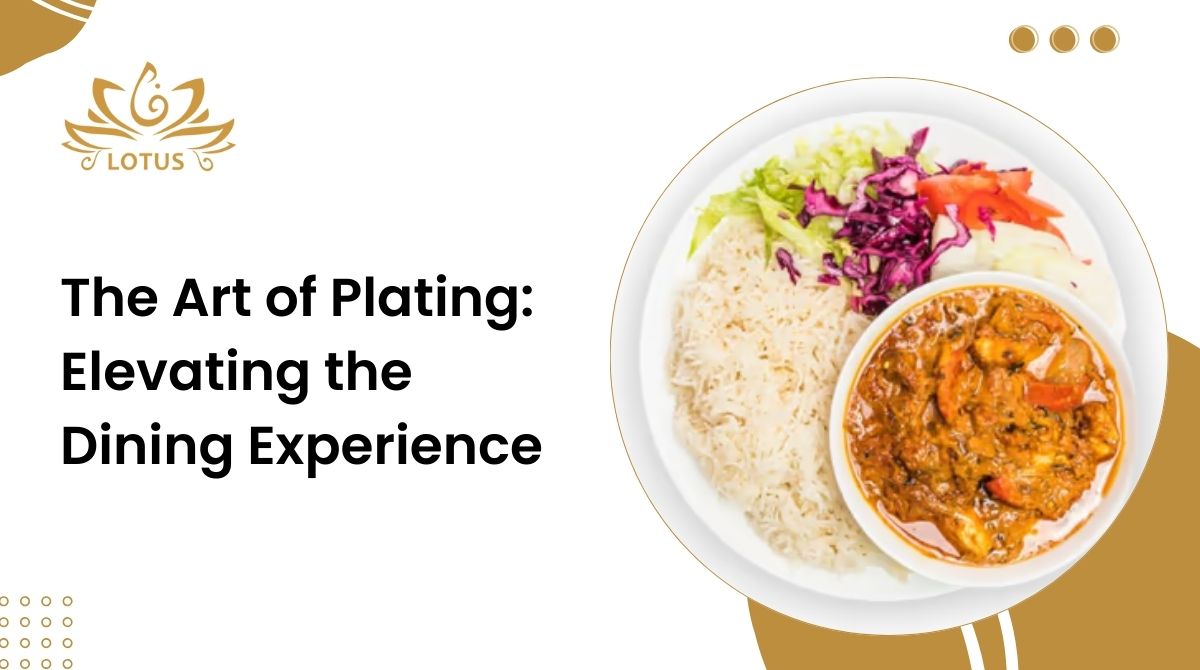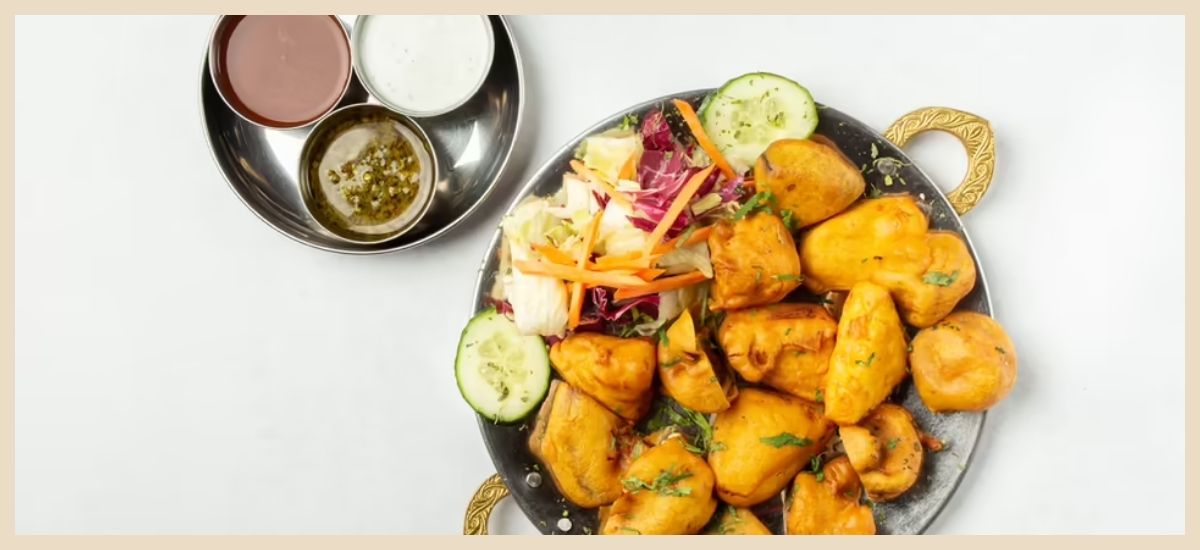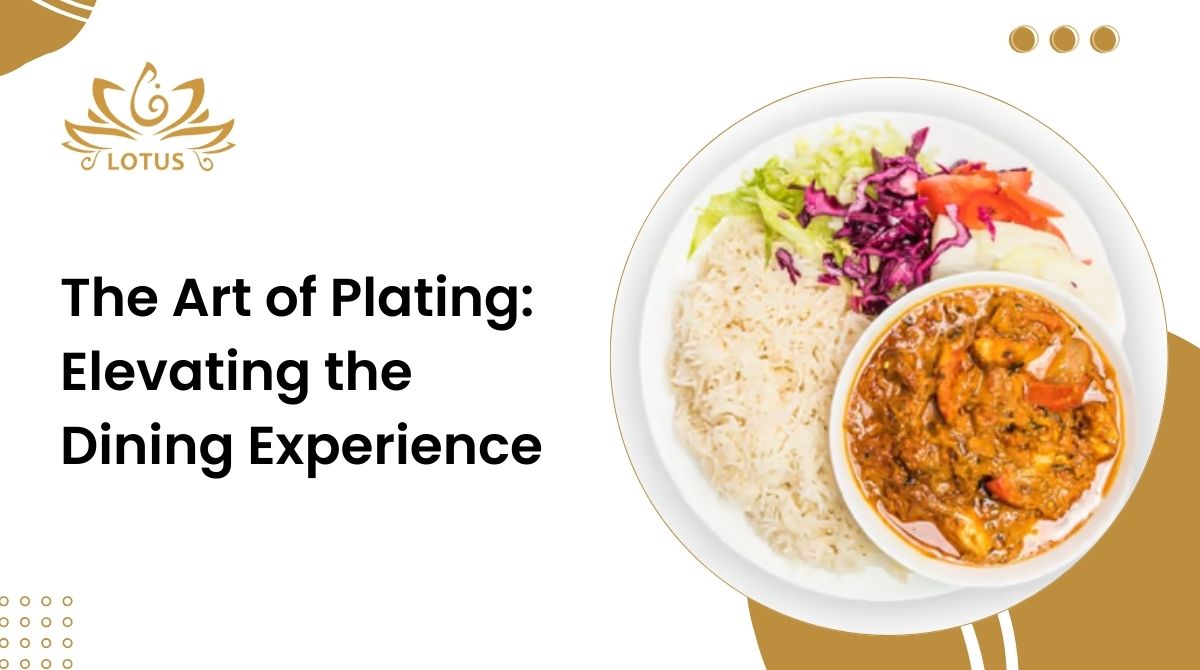When it comes to dining, the first impression isn’t always about the tast about how the food looks on the plate. In fact, food presentation has become an essential part of the culinary experience. The art of plating is not just about making food look pretty; it’s about transforming a meal into an experience. Whether you’re a home cook looking to improve your plating skills or a professional chef aiming to enhance your restaurant’s visual appeal, understanding the principles behind plating can take your food to the next level.

Why Plating Matters
We eat with our eyes first, and the way food is presented can impact our perception of taste. A well-plated dish enhances the overall dining experience and sets the tone for what’s to come. Whether you’re dining at a Michelin-star restaurant or enjoying a casual meal, a beautifully plated dish sparks excitement and anticipation.

Plating also reflects the philosophy and creativity of the chef. It tells a story about the ingredients, techniques, and culture behind the dish. The right plating can evoke emotions, stimulate appetites, and even leave a lasting impression on guests.
The Principles of Plating
While plating can seem like an art form that requires intricate skills, there are a few key principles that can make the process simpler and more effective. Here’s a breakdown of the most important techniques:
1. Balance and Symmetry
- The placement of food on the plate should feel balanced. This doesn’t mean that everything has to be perfectly symmetrical, but the components should be spread out evenly to create harmony. Avoid overcrowding, as it can make the plate look chaotic.
- You can play with asymmetry, but the goal is to achieve visual balance. Some dishes benefit from being grouped together in one area, while others might look better if spread out in a more dynamic arrangement.
2. Use of Negative Space
- Negative space refers to the blank areas on the plate that surround the food. Leaving some empty space allows the dish to “breathe” and creates an elegant, sophisticated look. This also gives emphasis to the main components of the dish.
- The space around the food makes the elements feel like they have room to shine. Use negative space to guide the eye to the focal points of the plate.
3. Colors and Contrast
- A visually appealing plate features a range of colors that create contrast. Bright vegetables, colorful sauces, and garnishes can make a dish pop and add vibrancy. Think about complementary colors—greens and reds, oranges and purples, etc.—to make the food stand out.
- Also, keep in mind that the color of the plate itself matters. Dark plates make colorful ingredients pop, while white plates often allow the natural hues of food to shine.
4. Texture and Height
- Texture adds visual interest. Combine different textures, such as crispy, creamy, smooth, and crunchy, to create variety in your dish. This not only enhances flavor but also adds depth to the presentation.
- Height is another powerful technique. Stacking elements or arranging food in layers can give the plate dimension and create a more dynamic, artistic look. Think about how the elements rise above the plate rather than just sitting flat on it.
5. Portion Control
- Plating isn’t just about the aesthetics; it’s also about portion sizes. Each item on the plate should be proportionate to the other, ensuring that no one element overpowers the others. This allows the diner to experience all the components of the dish in balance.
- A plate that is too crowded or overflowing can make the food feel messy, while one that is too sparse might leave the diner feeling unsatisfied.
6. Garnishes and Finishing Touches
- Garnishes are more than just decoration; they should complement the dish. Fresh herbs, edible flowers, microgreens, or a drizzle of sauce can add a final touch that elevates the dish visually and adds a burst of flavor.
- When garnishing, always think about the texture, flavor, and colors they add to the overall dish. Be sure to place them thoughtfully so they enhance, not overwhelm, the plate.
Common Plating Techniques
While there’s no “one right way” to plate a dish, some common techniques can help create visually stunning meals:
1. The Central Pile
- This involves placing the main component of the dish in the center of the plate and arranging other elements around it. This technique works well for hearty dishes like pasta or a steak with sides.
2. The ‘Sculptural’ Approach
- This method plays with height and layers, stacking components to create a sense of volume. It’s often used for more complex or avant-garde dishes.
3. The Smear or Brush
- Using a sauce or puree, you can create artistic lines or smears across the plate. This approach allows the sauce to act as both a flavor and visual component, guiding the eye to various elements on the plate.
4. The Free-Form Style
- For a more organic, rustic presentation, a free-form plating style may work. Instead of strict placement, the components are arranged more naturally or scattered across the plate.
The Plate as a Canvas
Think of your plate as a blank canvas, waiting to showcase the culinary masterpiece you’ve created. It’s not about perfection but rather about the creative expression of the flavors and textures within the dish at Lotus Restaurant. With practice, you’ll begin to see plating as an extension of your cooking, where each dish is carefully crafted to stimulate both the eyes and the palate.
Final Thoughts
The art of plating is a skill that evolves with experience and experimentation. It’s not just about impressing your guests; it’s about expressing your culinary creativity and elevating the dining experience. Whether you’re a chef or someone who loves to entertain at home, learning how to plate dishes beautifully adds a new layer to the appreciation of food. The next time you’re preparing a meal, take a moment to think about how the food looks on the plate—it could be the finishing touch that makes the meal unforgettable.
At Lotus Restaurant Berlin, we believe that the art of plating is essential to elevating the dining experience. Our chefs meticulously craft each dish to delight both the eye and the palate.
Certainly! You can view the Lotus Restaurant Berlin’s menu by visiting our official website.
Follow our culinary journey on Instagram: @lotusberlin
Explore more about our offerings and make reservations through Foodmato.

